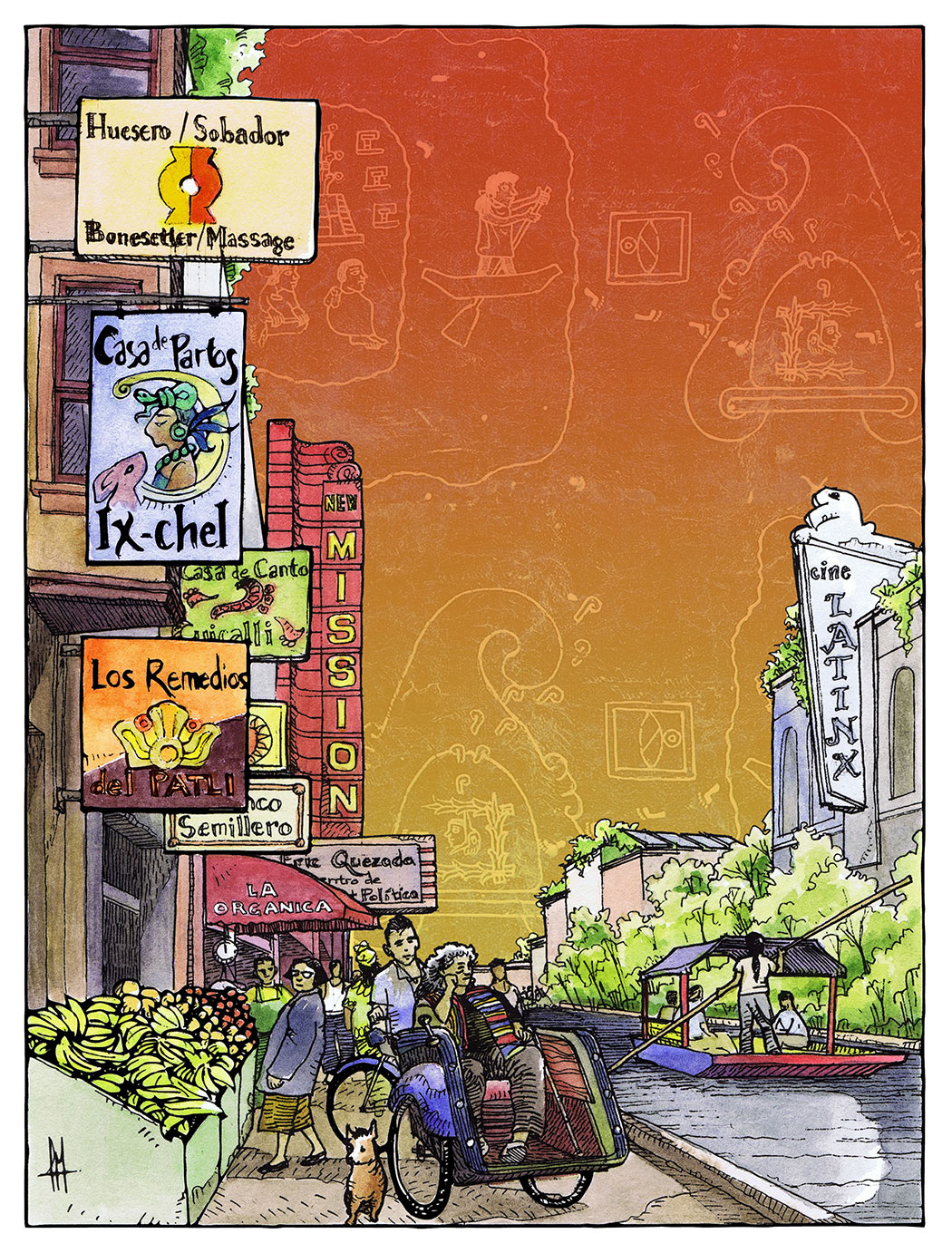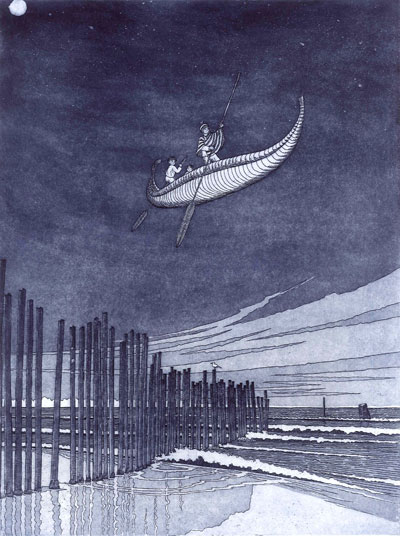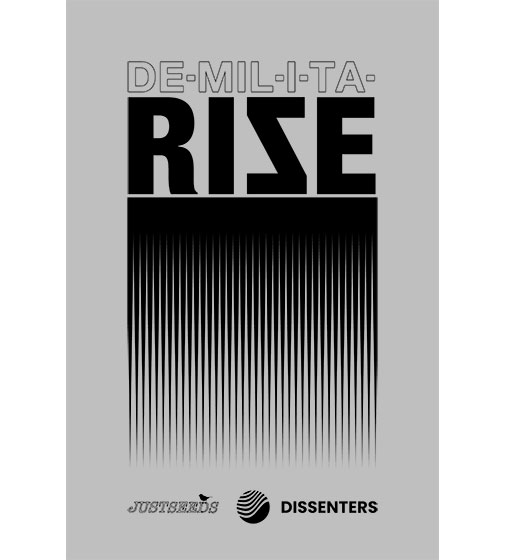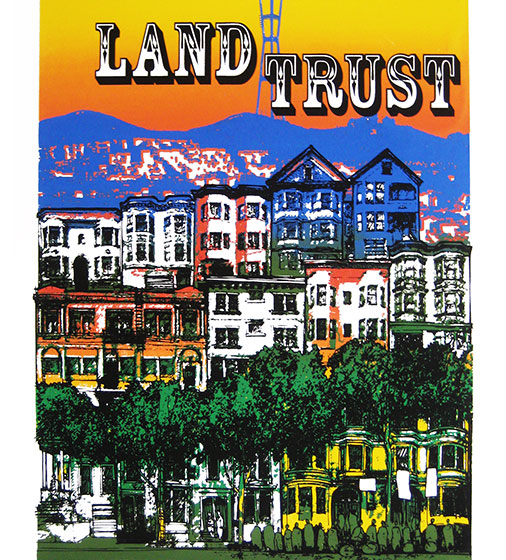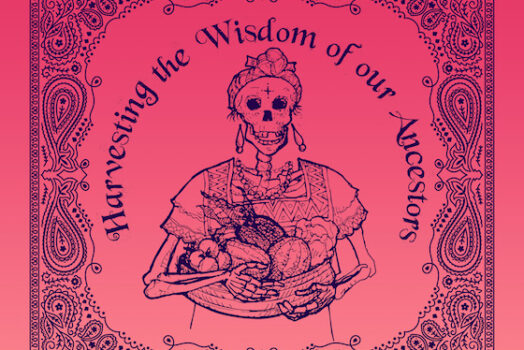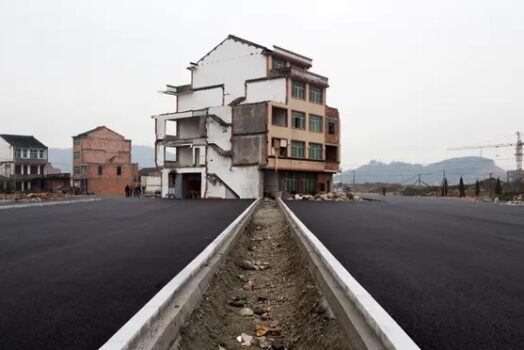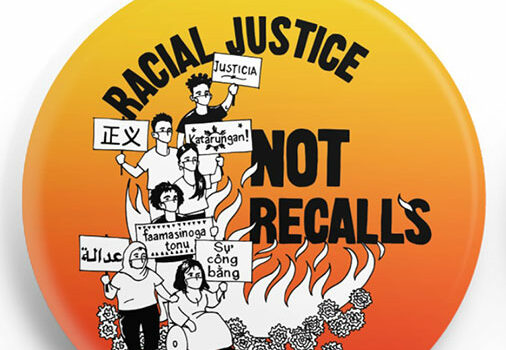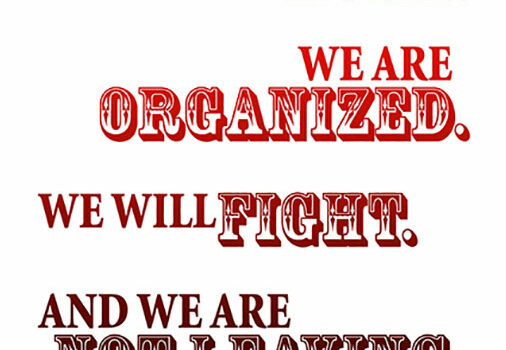When I arrived in the Mission in the early 90s, I was drawn in by people speaking my own language, the mezcla of words and colors and skin tones, and the street and its storefronts and signs reflected this: taquerías next to cheap import dollar stores, pawn shops, computer repair and socialist bookstores, Yucatecan next to Vietnamese, but then too, over the years, the signs of gentrification, the mobile phone franchises, the new theater redesigned exclusively for 20-something millennials, and trendy too-expensive coffeeshops. In 2009 I was involved in fixing up 518 Valencia as what was to become the Eric Quezada Center for Culture and Politics, and it got me to thinking, what would the store signs look like in a utopian future? What would markets and trade look like when the oppressive fixtures of corporate capitalism were removed, and when blind consumerism was replaced by things that mattered, would the dollar stores be replaced by community social centers, neighborhood health clinics and birthing centers, produce and medicinal herb shops straight from urban agriculture plots. This could be the new Aztlán, the home for the cosmic mezcla of humanity. The stories of Aztlán were of a place surrounded by waters, where a white heron flew, from which the Nahuatl-speaking peoples headed south to settle in the basin of Mexico. Could it have been a place like this? The sky is adapted from a map of the commencement of the migration from Aztlán from the Codex Boturini.
Futuros Fugaces was a way to explore themes and relationships that have concerned me for a long time: what it means to reclaim ancestral knowledge, how we re-imagine the future, and what this looks like in the particular of the Mission/Excelsior Latinx community I’ve worked with for the last 30 years. Thanks to the SF Arts Commission for funding my first Individual Artist Grant.
In imagining a Latinx futurism, the project took me in unexpected directions, beyond a more literal extrapolation of futurism, to a more mythical layering of Mesoamerican imagery as a way to connect past and future cosmic time. The emergent utopias of our communities of color will not be sterile or sanitized; they will contain hints of the dystopias we’re already living through, and they will contain the messiness and contradictions of our cultures, a collage of rasquachismo, rooted in a reclamation of ancestral traditions and collective memory to urban land struggles and queer ecologies. As I thought of a Latinx futurism, the cyclical nature of Mesoamerican time, cyclical, perhaps helical, expanding outward but always returning. Or perhaps it is a simultaneity of times, layered in parallel existences informing the present, accessible through ritual and ceremony. Mesoamerican time gave me a layering of myth and history and contemporary cultures and utopian visions. Utopia has to coexist with the present, accessible through our cultural practices and our arts, to inform our actions. Glimpses or shadows of that utopia found their way into these images.
The images were created in pencil, scanned to create the line drawing, then watercolored and scanned again, and additional colors and backgrounds applied digitally in Photoshop. They were printed as giclée digital fine art reproductions at East Bay Giclée in North Oakland.
